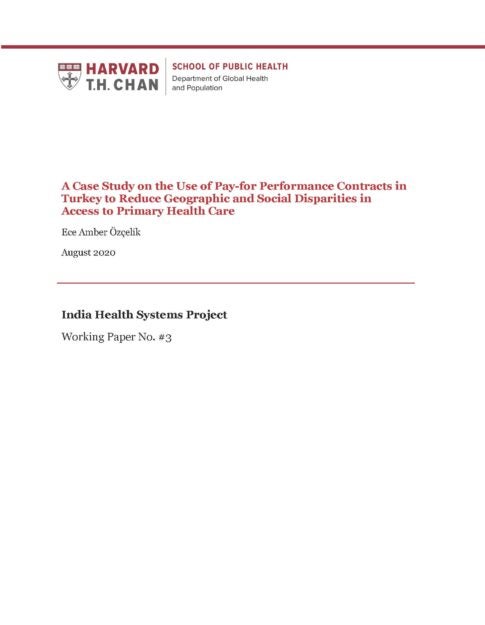A Case Study on the Use of Pay-for Performance Contracts in Turkey to Reduce Geographic and Social Disparities in Access to Primary Health Care
By Ece Amber Özçelik
August 2020
Abstract
Turkey is one of the few countries that explicitly relied on primary health care (PHC) provider payment reforms as part of a much larger health system reform process known as the Health Transformation Program (2002-2013) to address inequitable access to health services. This case study reviews Turkey’s PHC provider payment reforms (2005-2007) that entailed the introduction of performance-based contracts for all PHC providers to derive lessons that may be applicable to India’s ongoing efforts to redesign the existing payment arrangements for its own PHC providers. This analysis uses the Flagship Framework to understand how changes in PHC provider payment methods can lead to changes in the geographic distribution of health professionals and in the use of PHC services. It compares the traditional salary-based provider contracts used prior to the reform with the new performance-based contracts, with a focus on the design features that provide explicit financial incentives for (1) deployment in areas with low levels of socioeconomic development and (2) increasing the number of PHC consultations for certain segments of the population, particularly for maternal and child health care. The case study derives three lessons from Turkey’s experience in designing and implementing PHC provider payment reforms. First, redesigning provider payment arrangements at the PHC level is an important policy lever that can lead to better health system performance. Second, relying on provider payment mechanisms to boost provider availability in areas with low socioeconomic development alone does not guarantee significant increases in provider density in these areas due to the other underlying factors that drive geographic maldistribution of health professionals. Third, the design choices for identifying performance indicators in provider contracts can encourage providers to prioritize certain kinds of healthcare services, but not others that may also be needed.
Resources
Download this Working Paper here.
